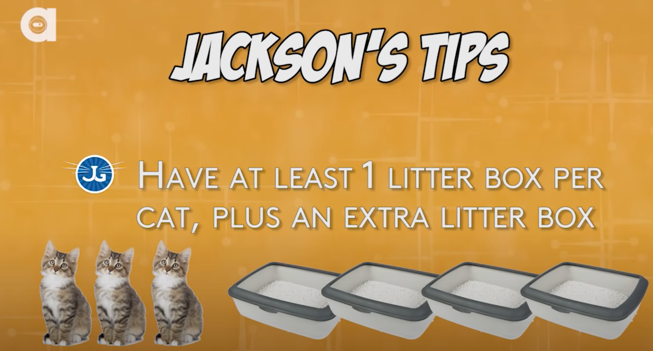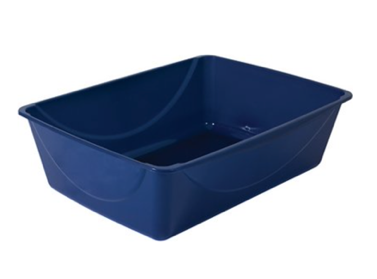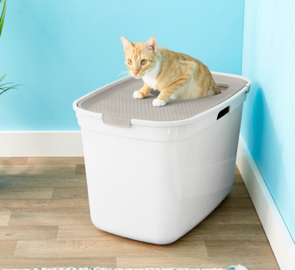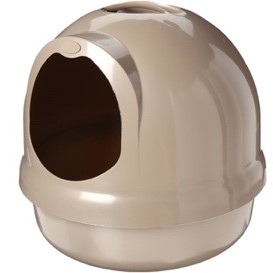Litter Box Training Tips and Tricks
Great advice from cat expert Jackson Galaxy and a summary of the tips and tricks you can use at home:
Most cats will just automatically use the litter box after being shown where it is, but some cats may have issues. Kittens in particular might need extra training while cats who have suffered some sort of trauma or perhaps lived outside their whole lives may need some support. Here are some basic tips and tricks!
Most Important:
*At LEAST one litter box per cat. If you have 3 cats, you should have at LEAST 3 boxes. Most experts say that having an extra litter box is key to curb any competitive or disruptive behaviors. Therefore if you have 1 cat, 2 boxes are best; 2 cats, have 3 boxes, etc.
*You have to clean or scoop the boxes every day! Cats are inherently clean animals and are averse to dirty litter boxes. If the boxes are not clean, they will look elsewhere. You should be emptying the litter box completely, washing the box out, and replacing with fresh litter every week.
*Make sure their food and water is as far away as possible from their litter box. No one wants to poop where they eat and cats are very particular about this.
Reasons Why Cats Don’t Use the Litterbox:
If your cat is not using the litter box, it is either behavioral or medical. Typically cats will not use the box in order to communicate something to you. If you are certain there is nothing medically wrong with your cat, then a behavior issue must be present. But it’s okay and actually recommended to verify with your vet that nothing medically is wrong with your cat. Some concerns would be kidney issues, urinary tract issues, or other medical ailments. Rule medical issues out first before proceeding.
Things to Note:
*Litter Type: Your cat may want a different texture. Use a natural, unscented litter; there are many options for you and giving your cat options in the beginning is key. Please note that scented litter can cause cats to be repelled by the perfume’s odor. A cat also needs to be able to locate the litter box by his or her own scent. If he/she can’t smell it, chances are he/she won’t find it. Once you find what they like, don’t change it. Be consistent. *Don’t use plastic liners.
*Litter Box Type: Some cats prefer a non-covered litter box while some prefer a covered one. Statistically cats prefer a box that is NOT covered as they want to be able to see their surroundings when they are in a vulnerable position. The box should be large enough for a cat to completely turn around. Covered boxes may prevent full range of motion and also may lock in the smell which may further deter your cat from using it. You can try both and see what they prefer. Automatic ones are not the best idea; they can scare cats away and might deter them from using it.
*Location: Some cats want a box in a location that is open and where they can see from all angles as they are going. Some cats want a more private location. That is why having a couple boxes in different areas is key. You can see where they prefer and then reduce the boxes if necessary. The location of the box should be a low trafficked area that is quiet and calm for them. For example, next to a washer or dryer is not great as they are noisy.
Reward and Never Scold:
When training a cat to use the litter box never punish or scold him/her while they are in the litter box; this will almost certainly create a negative association with the box itself. If your cat makes mistakes, pick them up and place them in the litter box. They will make the connection soon enough. It also helps to praise them when they successfully use the box and also reward using something they love like treats.
Some “Out of the Box” Tips
*If you have a cat that was used to going potty outside, you may try filling a box with fresh dirt. Make sure it doesn’t contain any harmful chemicals or fertilizer. You can gradually begin to mix your litter with the dirt, increasing the litter and decreasing the dirt over time.
*If you notice a specific place your cat is urinating or defecating, move the box to that location.
*Feed your cat where he/she is urinating/defecating, because many cats will not do both in the same place.
*2 inches is usually the right amount of litter to use but maybe try more or try less.
*You can try an empty litter box, a box filled with scraps of paper, or other items your cat may be using instead of regular litter. Then try to gradually switch them over to regular kitty litter.
*If you have a kitten or senior kitty, make sure the sides of the box are not too high for them to comfortably get in and out of.
*Many cats will need to eliminate after some playing. Play with your cat near the box and then encourage them to use it. You can also use your own finger to dig in the litter to show them how it’s done. Never force their paw to scratch the litter; we don’t want any negative associations with the boxes.
*Don’t use sprays, air fresheners, or deodorizers; it can make cats avoid the boxes. Just keep them clean and they will not smell!
Here are some basic recommended litter box types – Click picture to purchase:
SPECIAL NOTE: There are many reasons why declawing your cat is cruel, painful, and will cause lifelong issues. One reason is that it can cause a cat to not use a litter box because scratching or digging can be very painful.
Click picture to view video on declawing:










